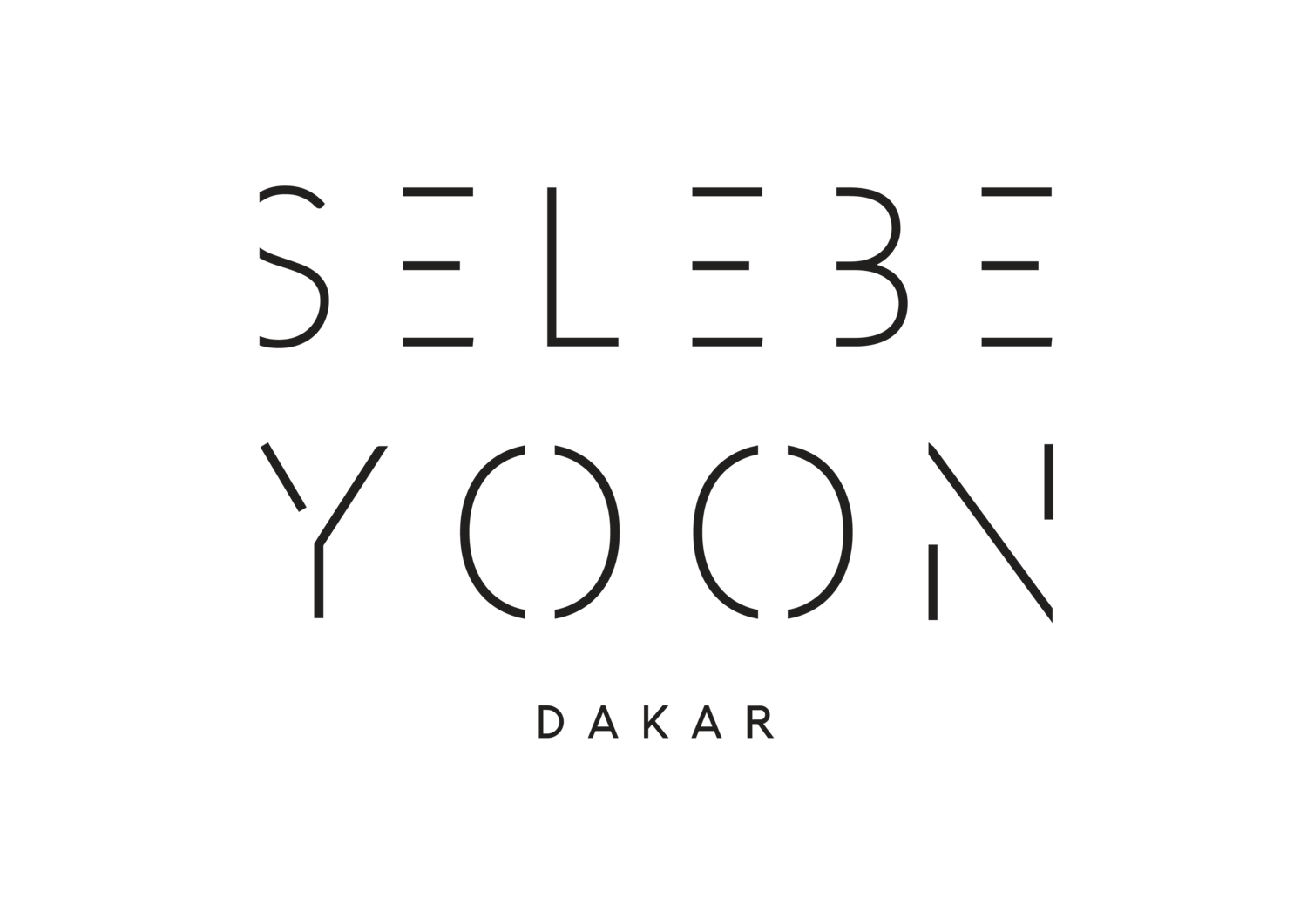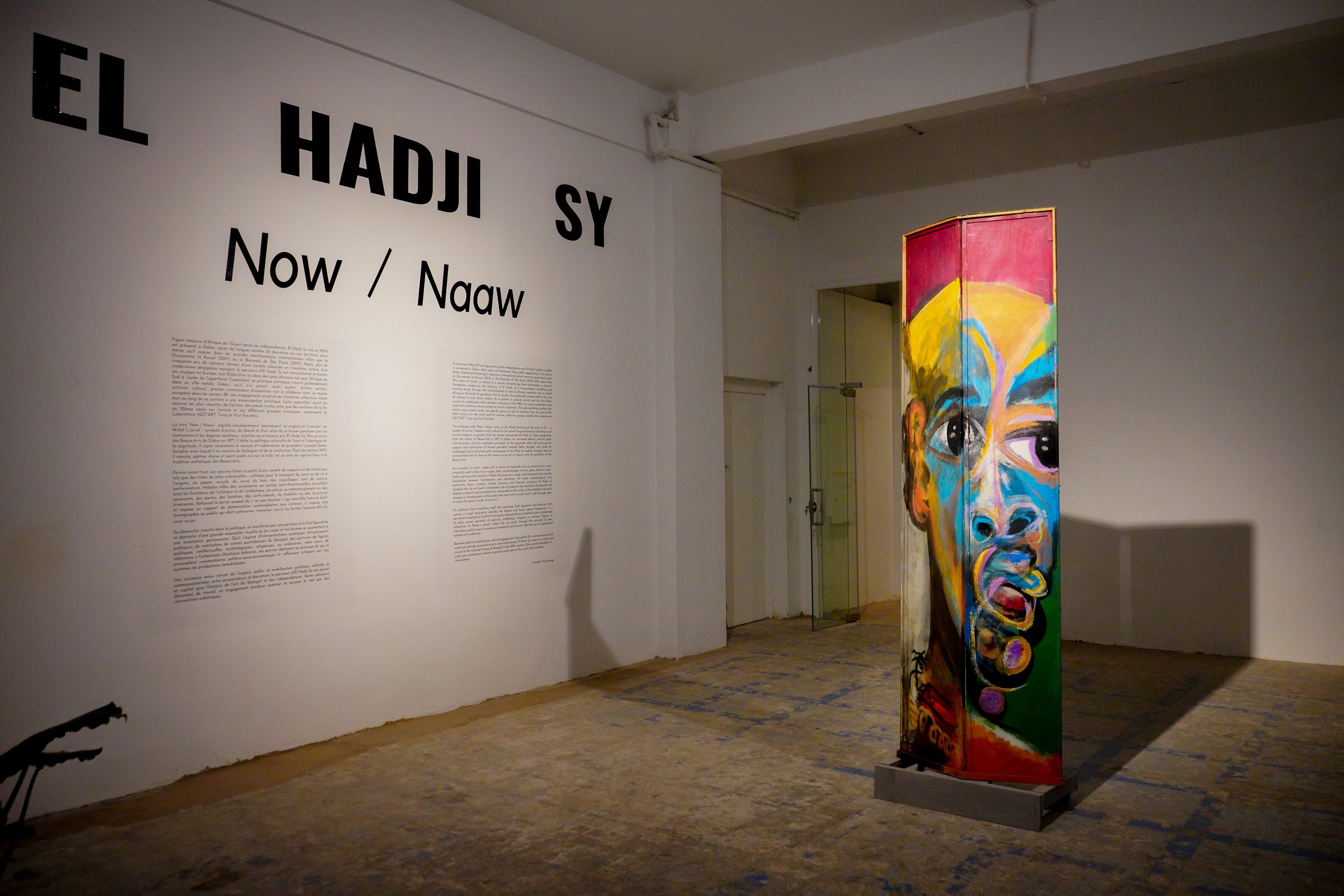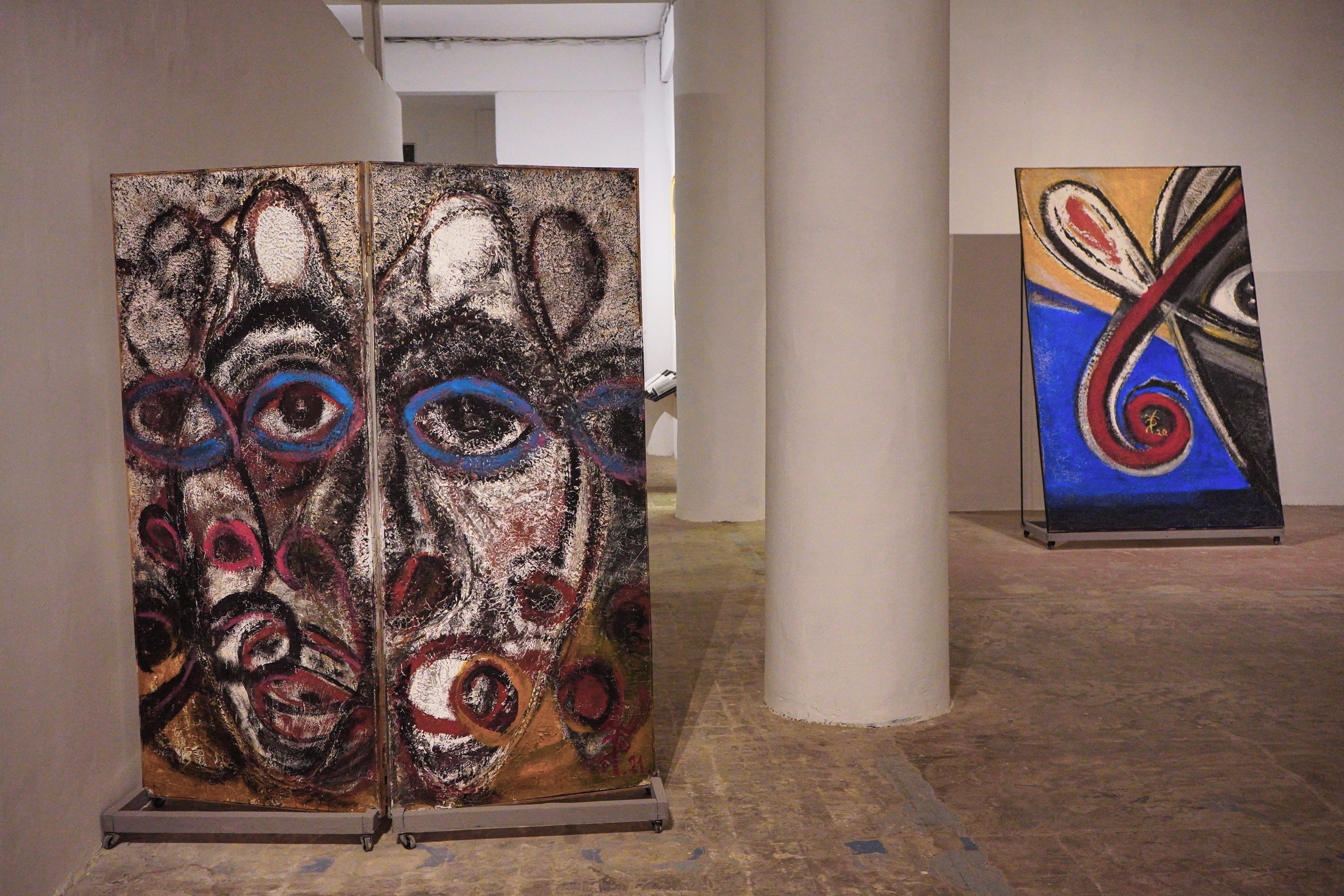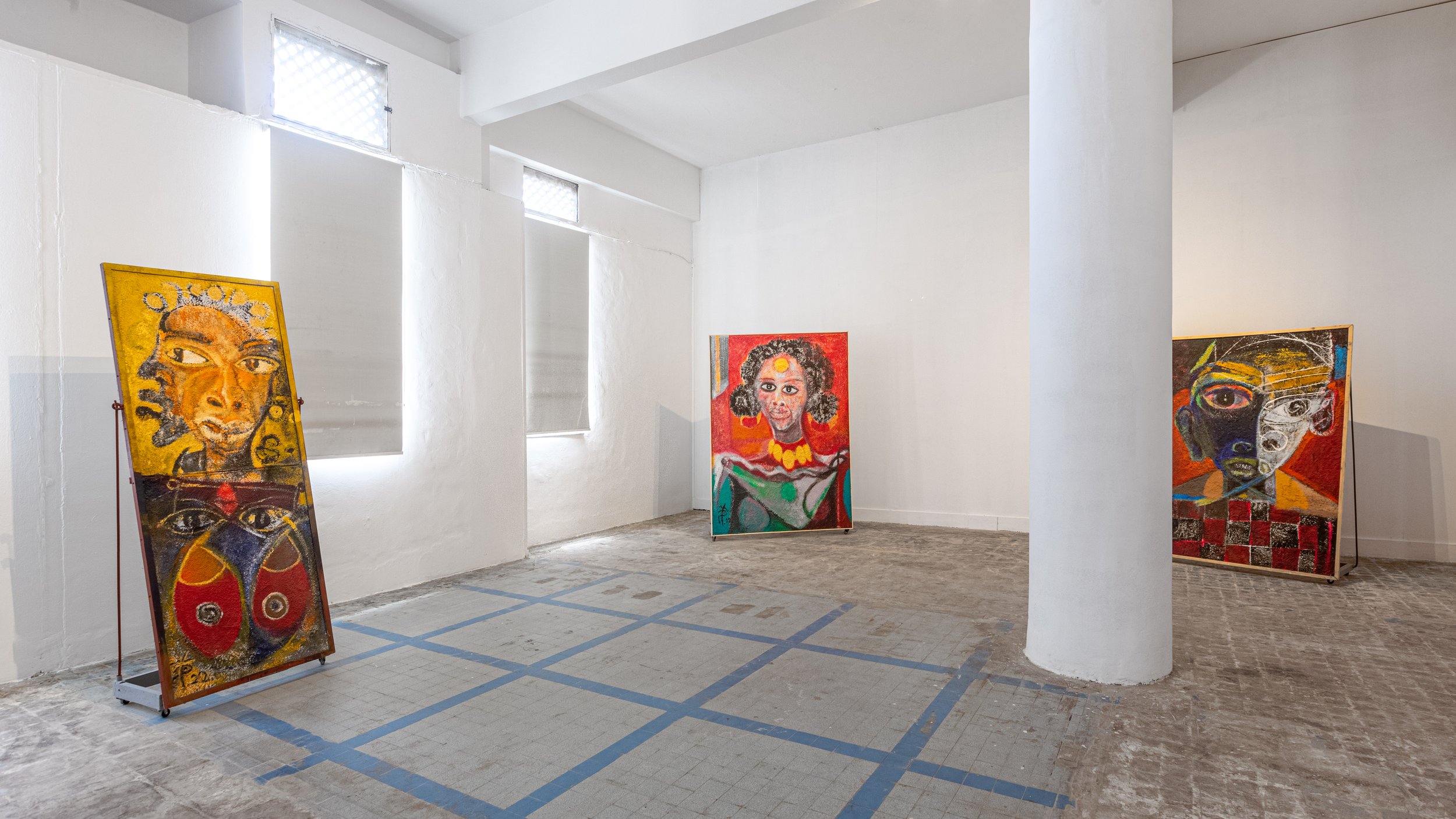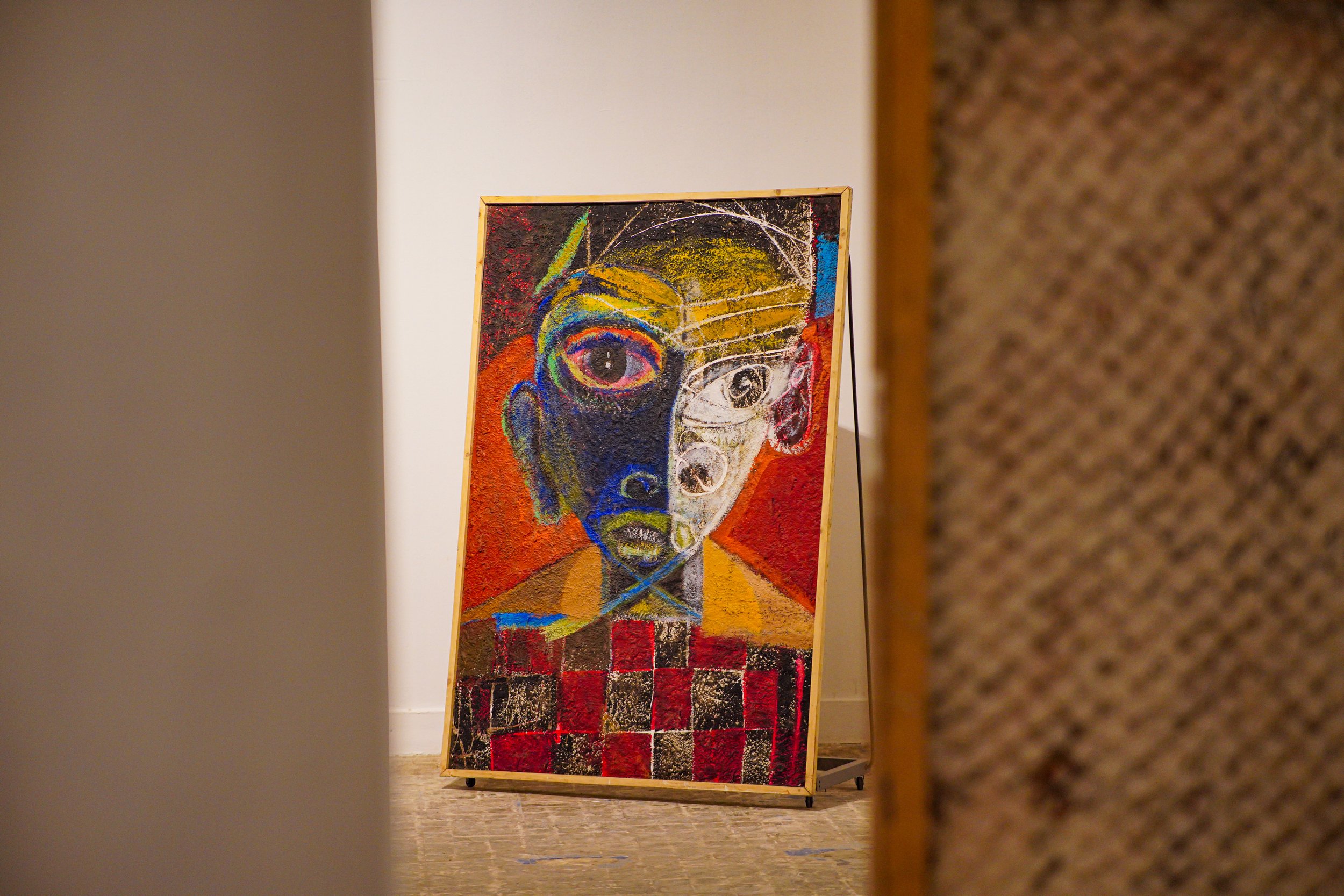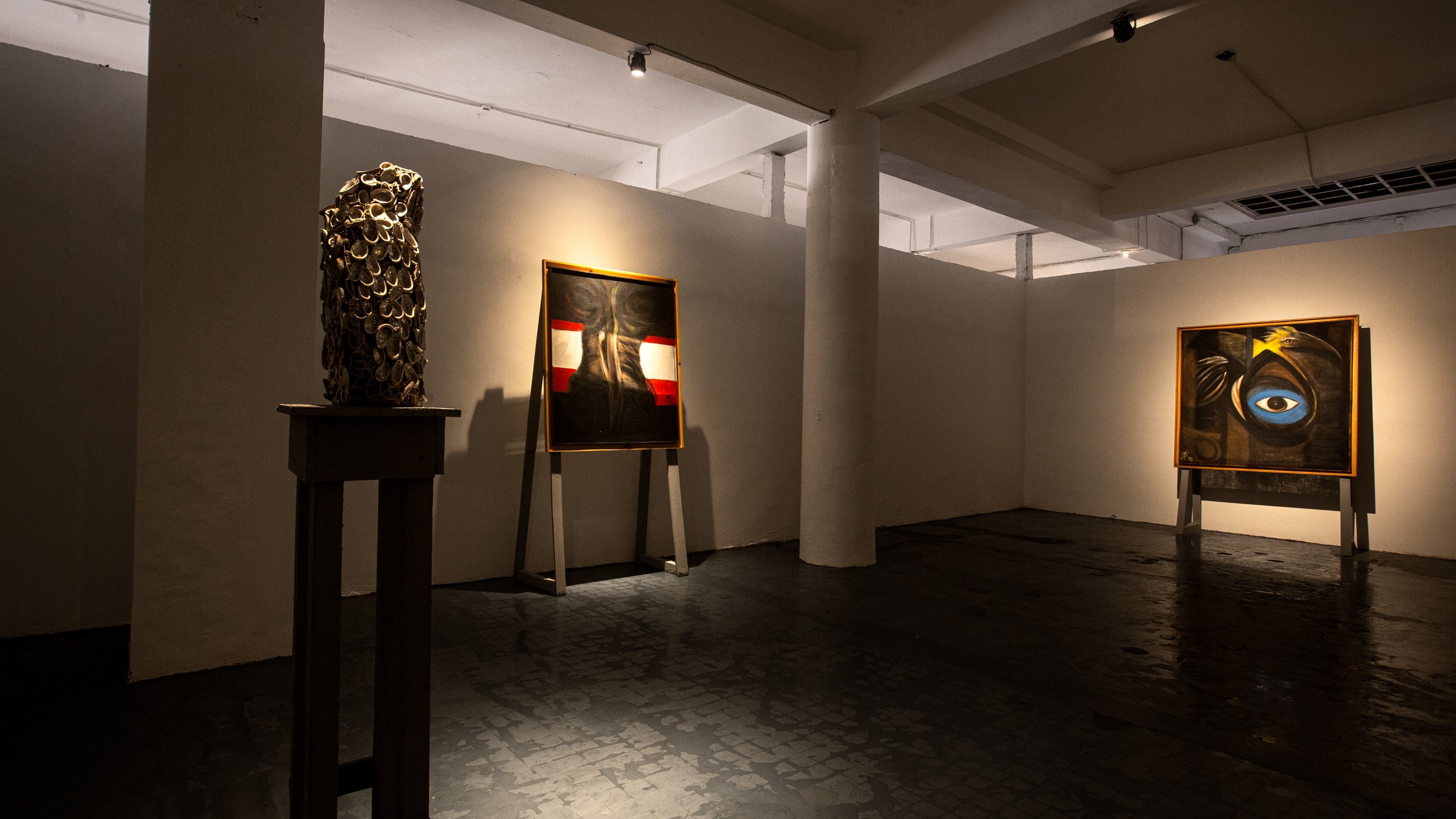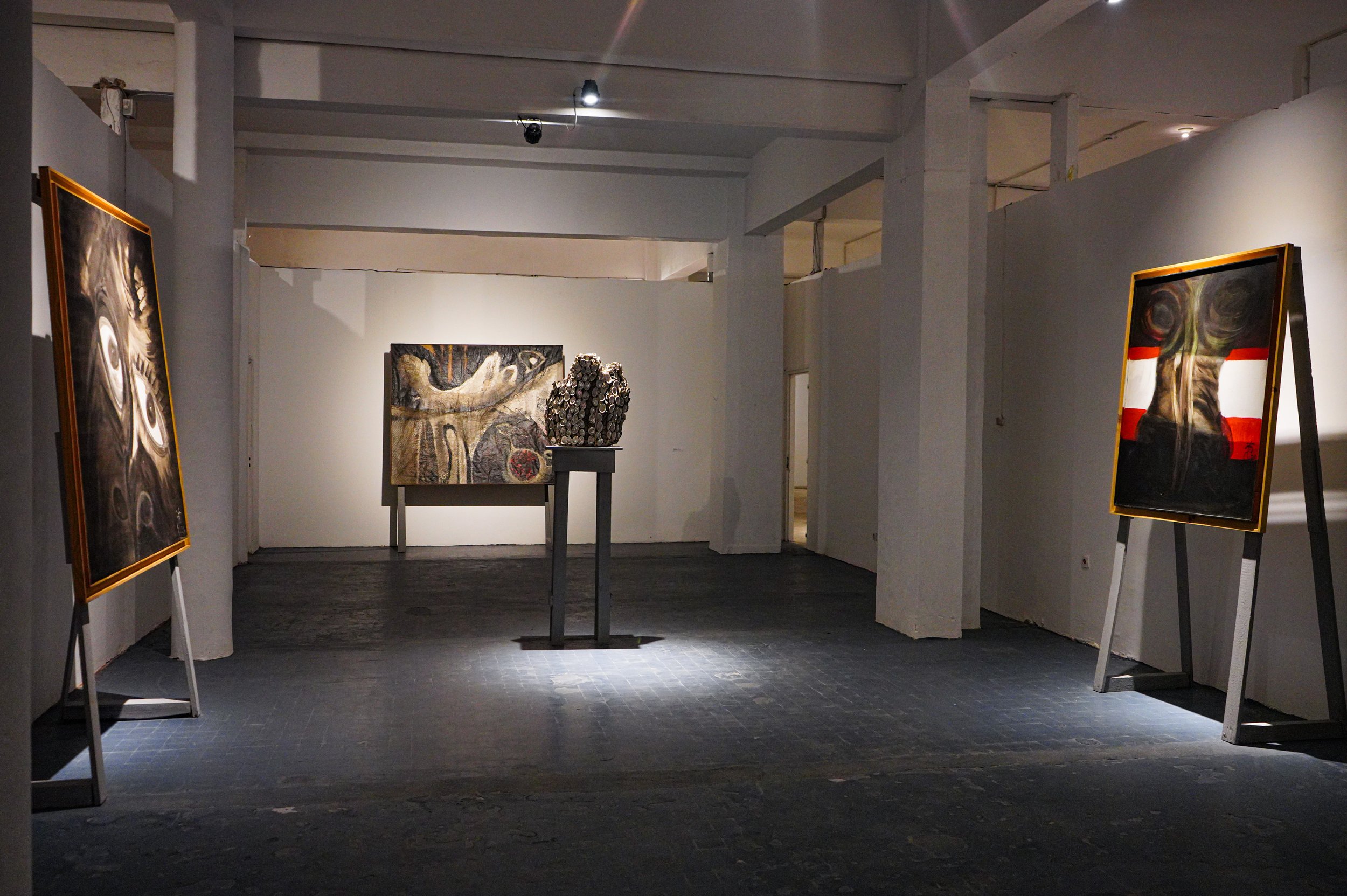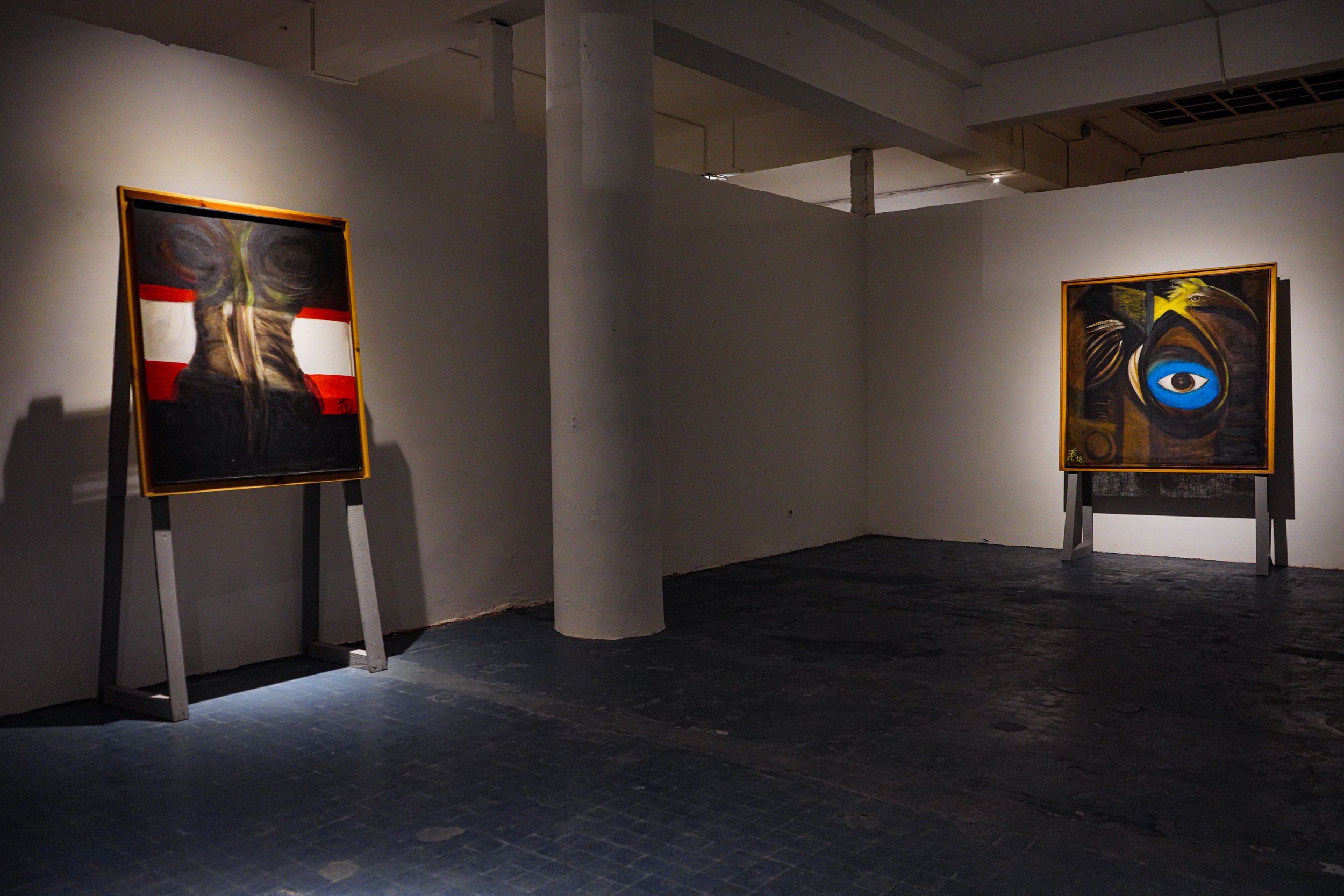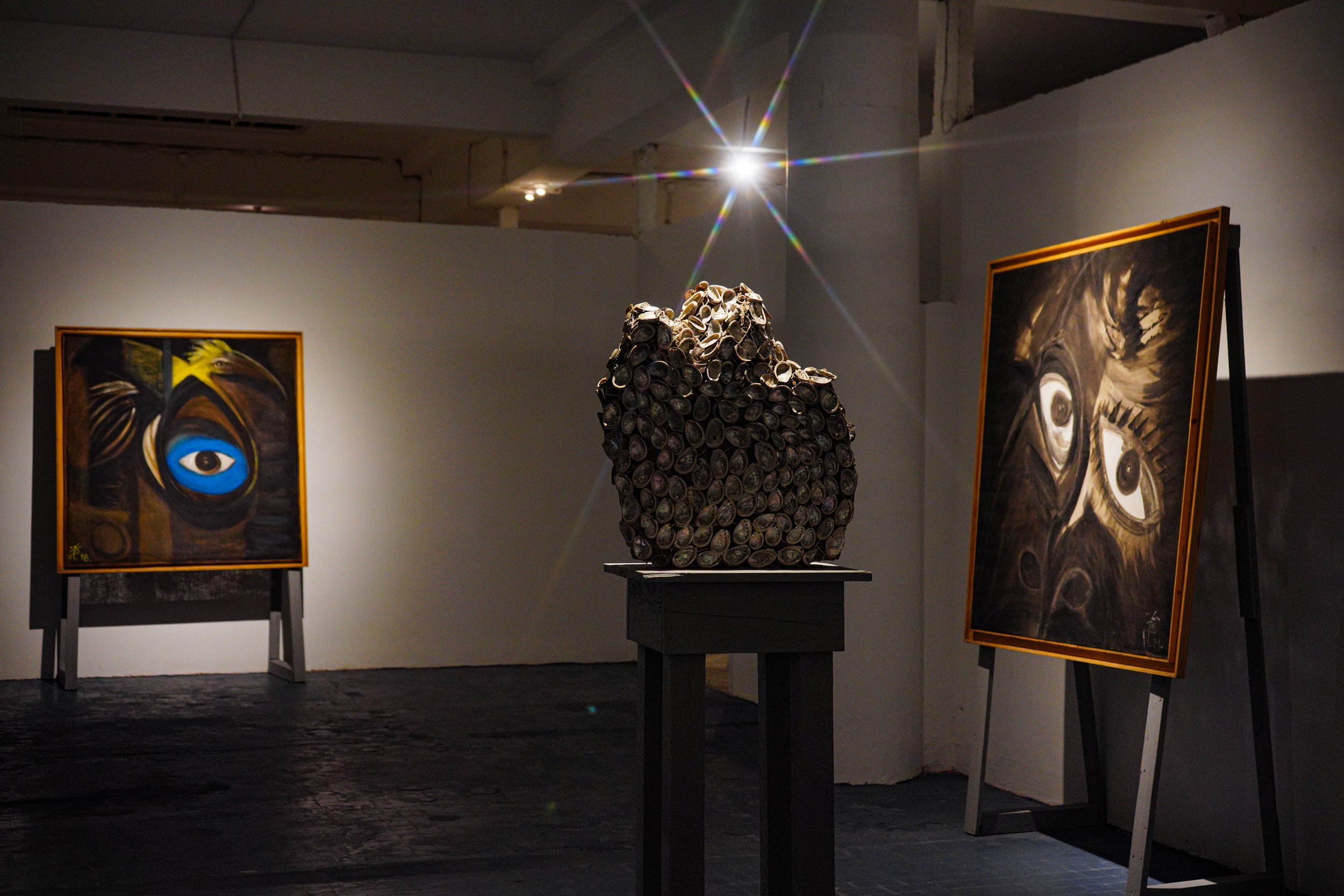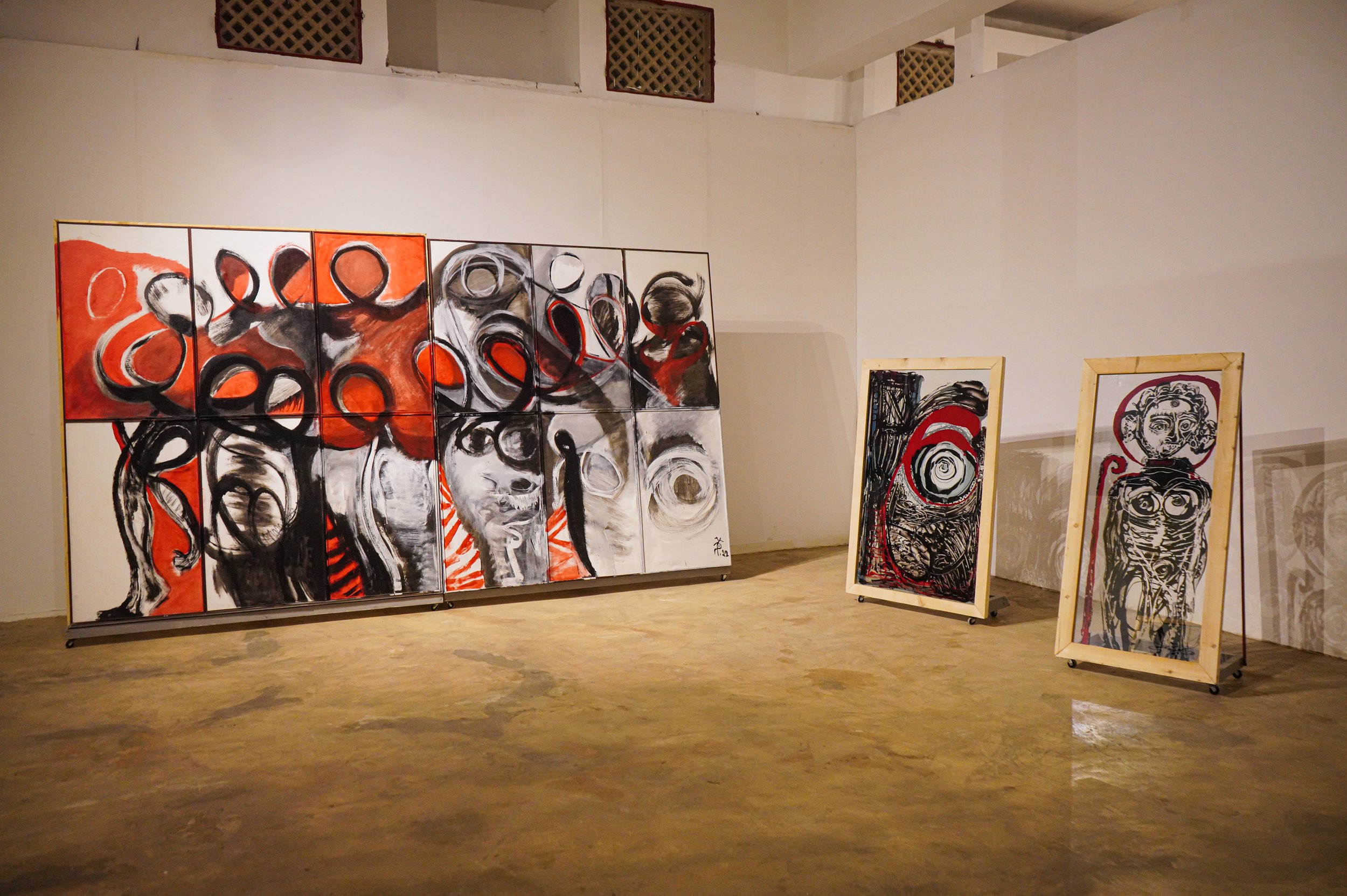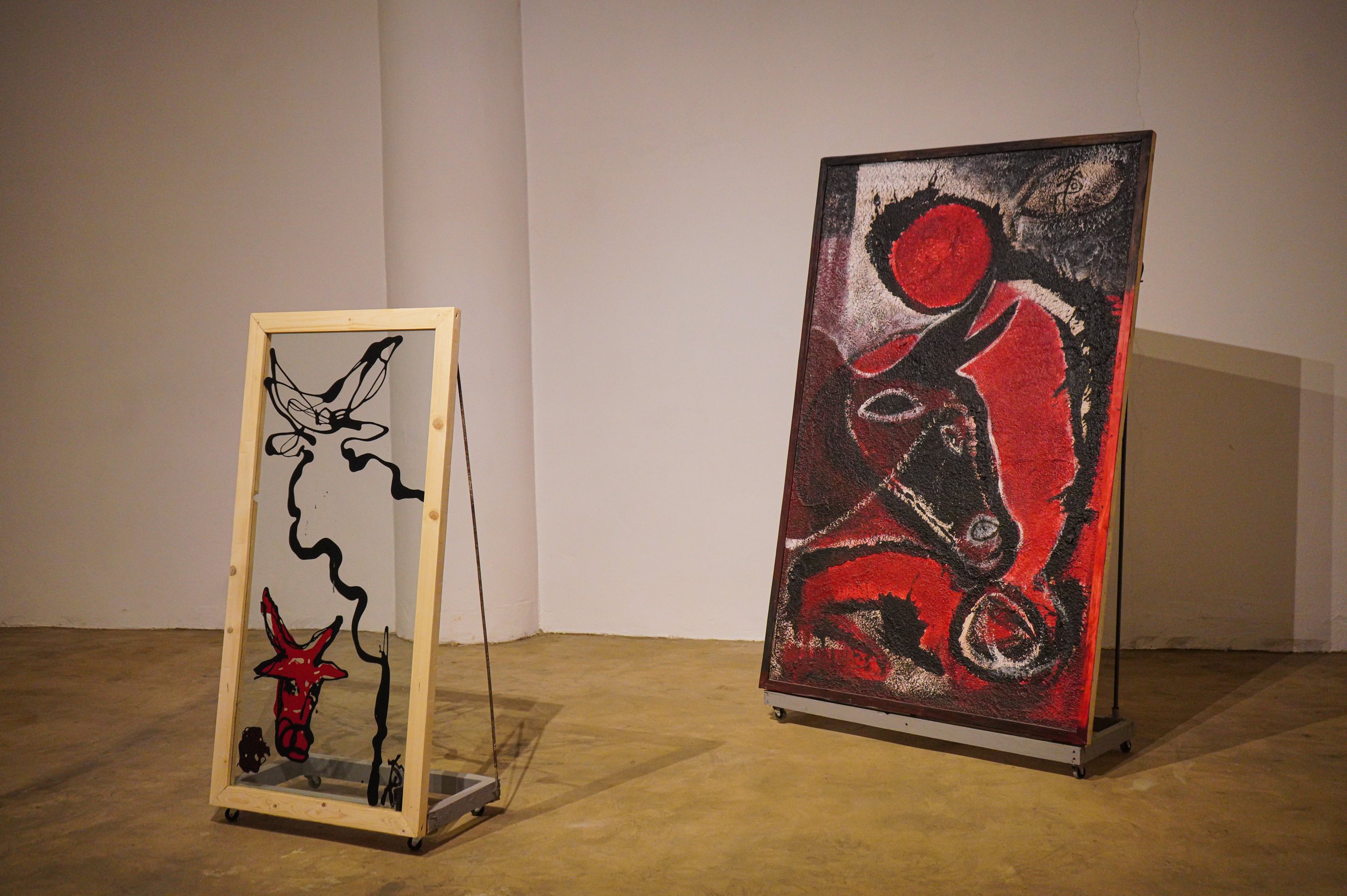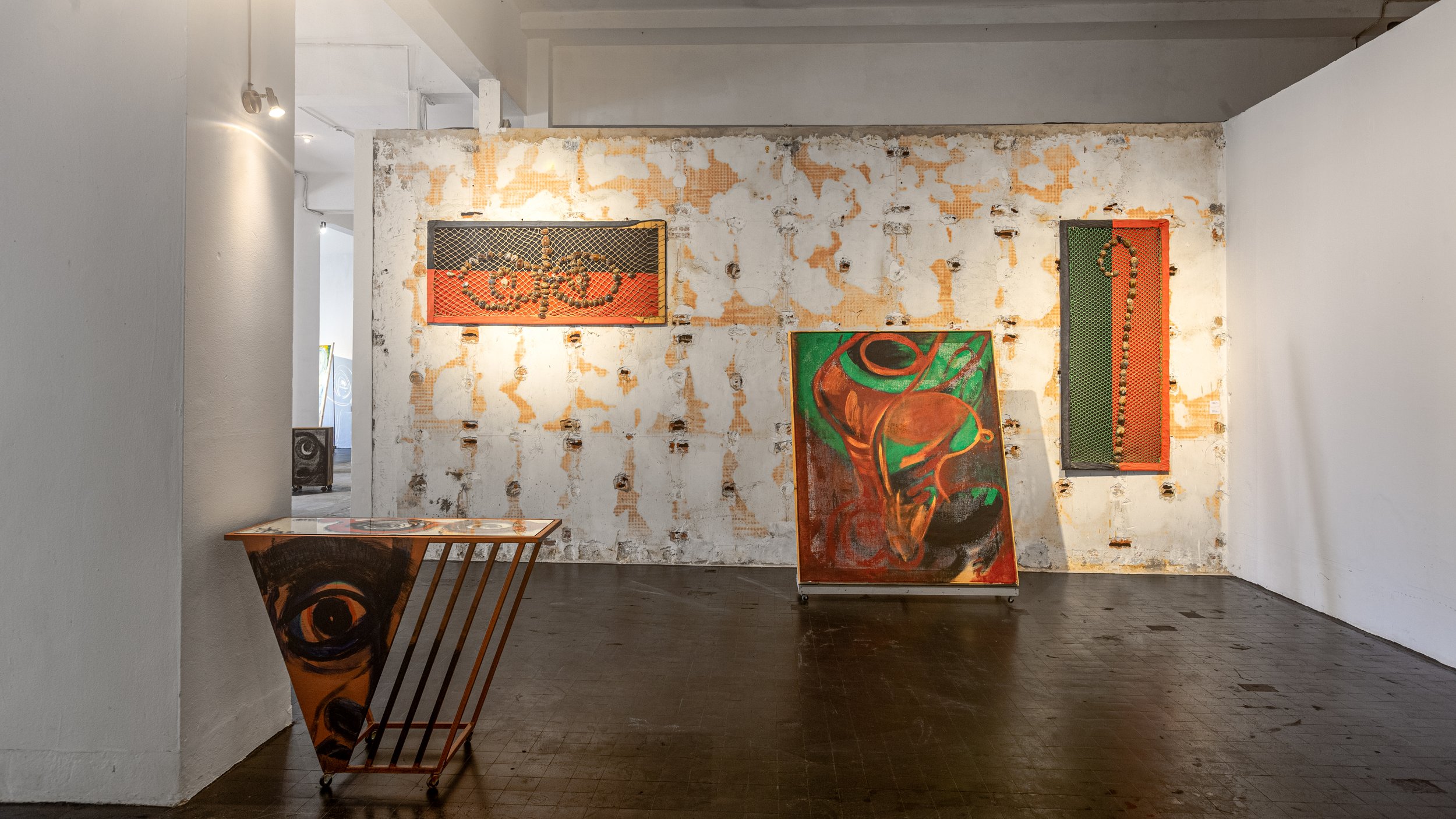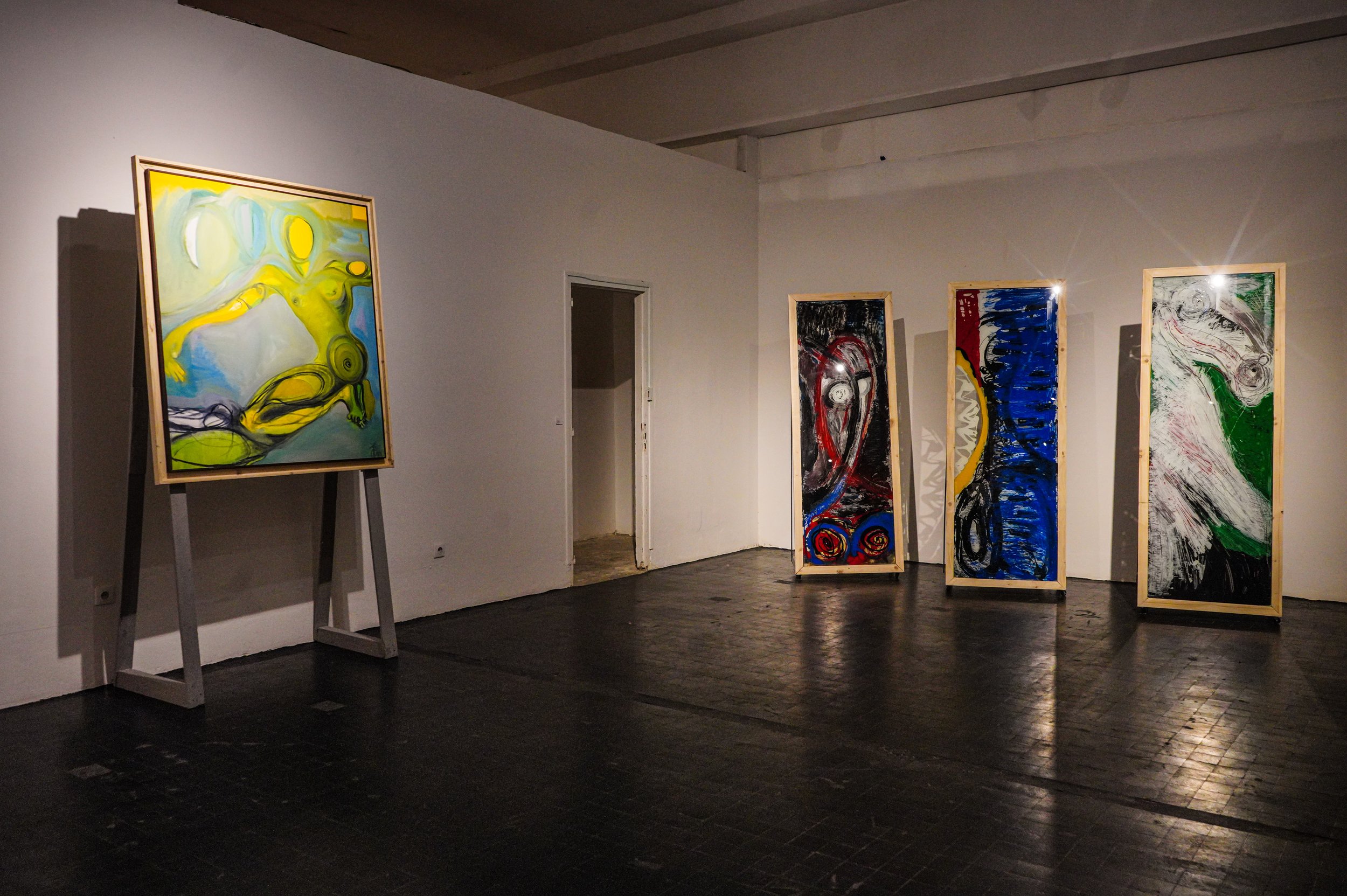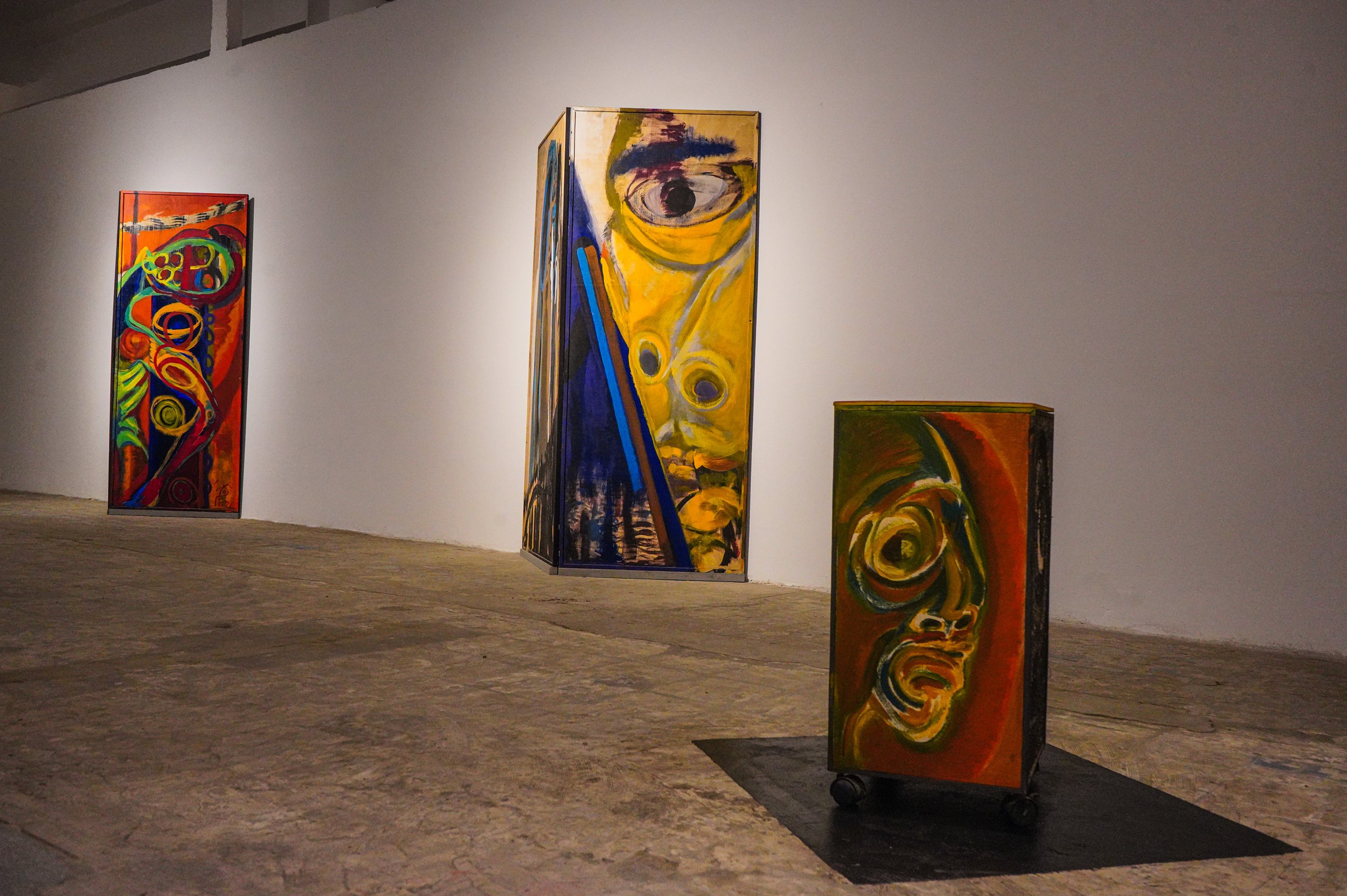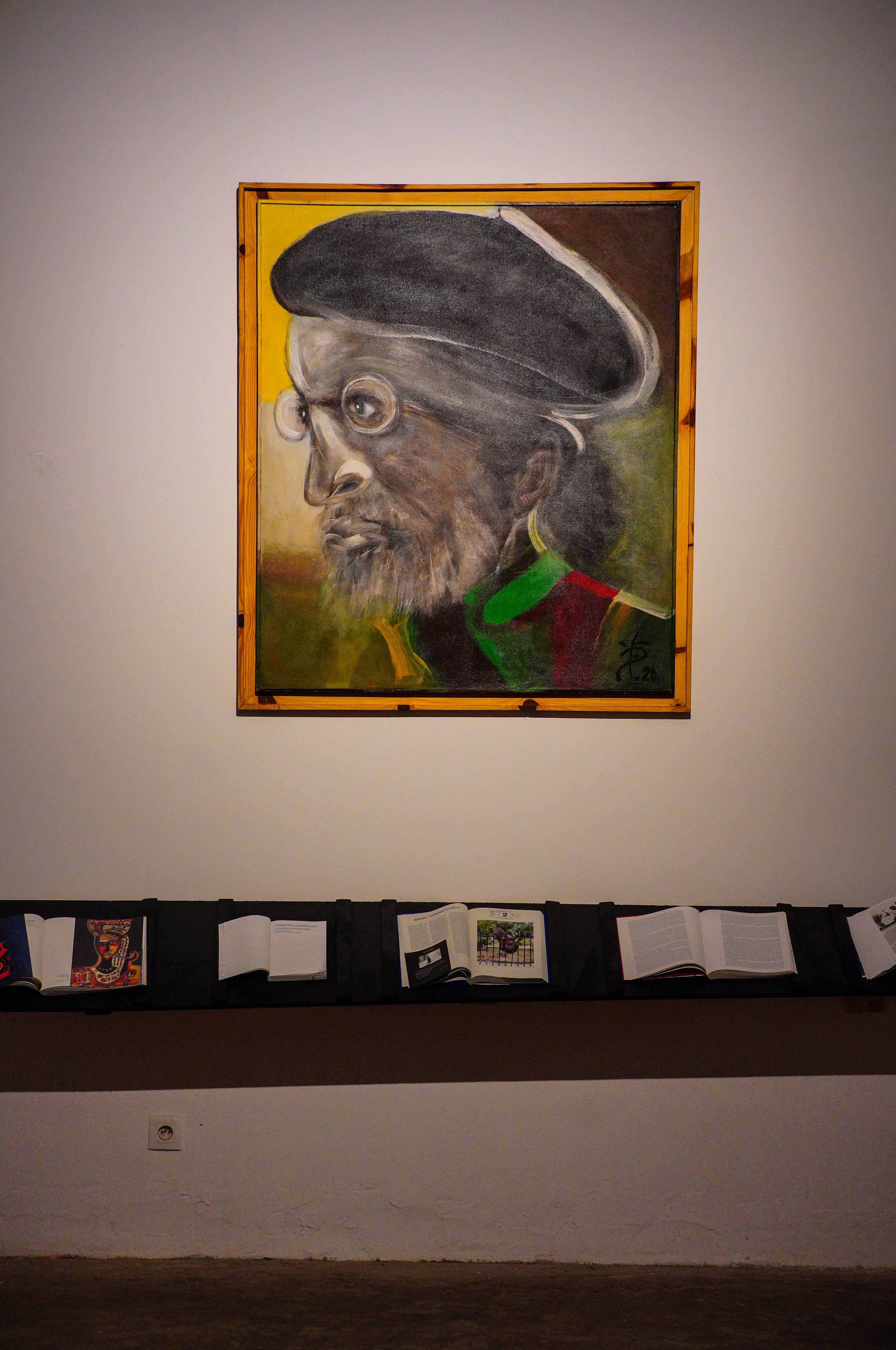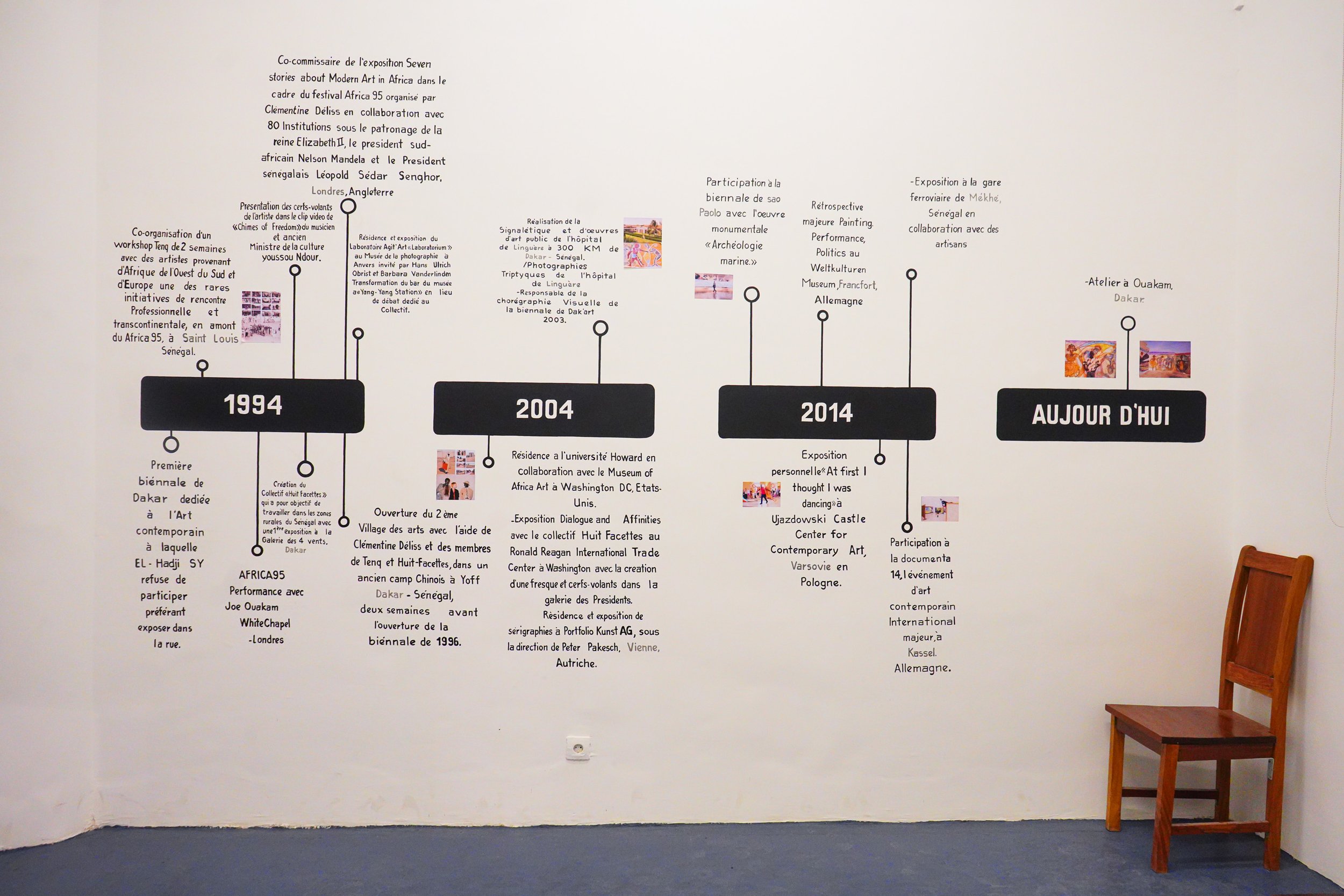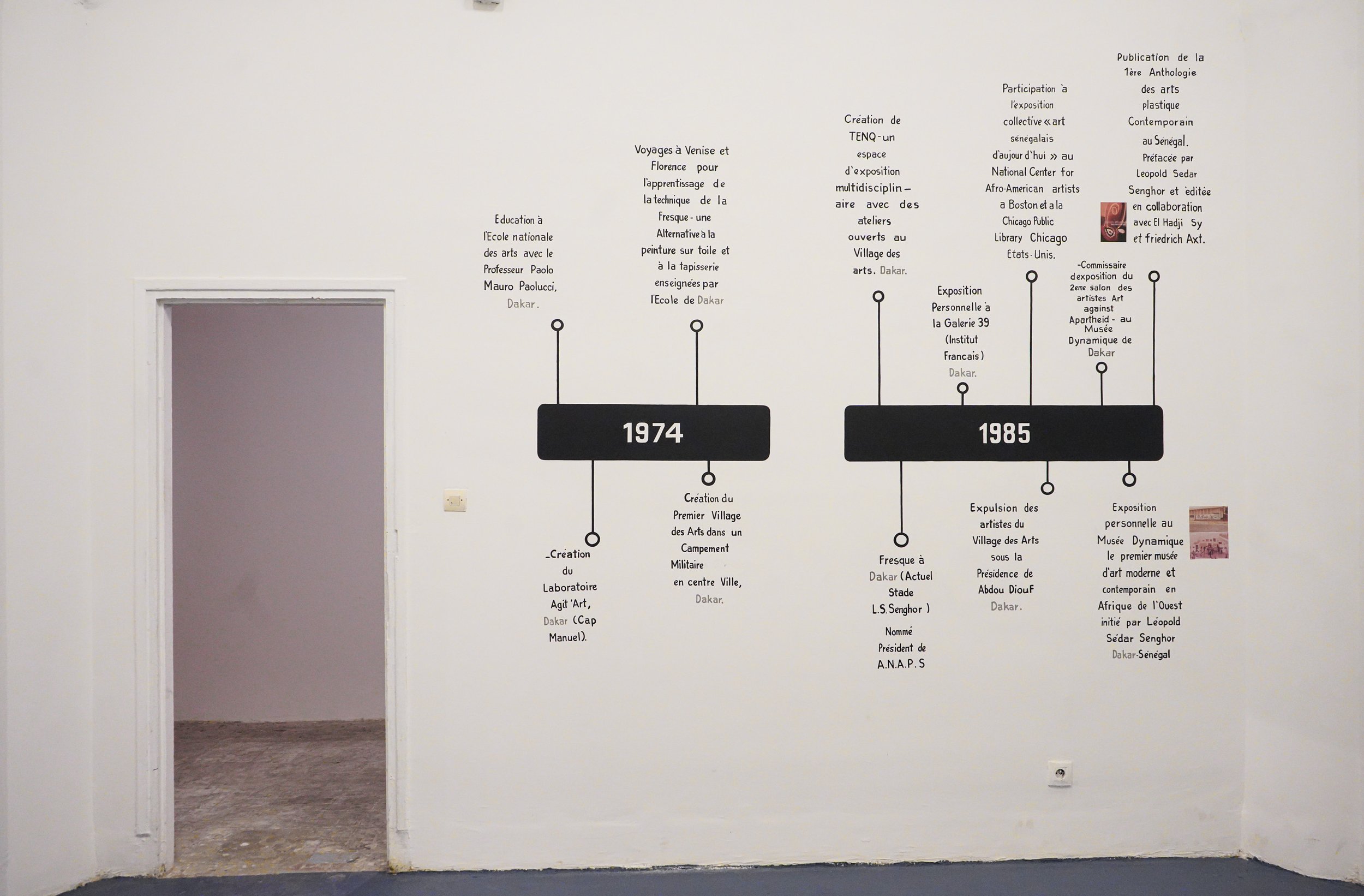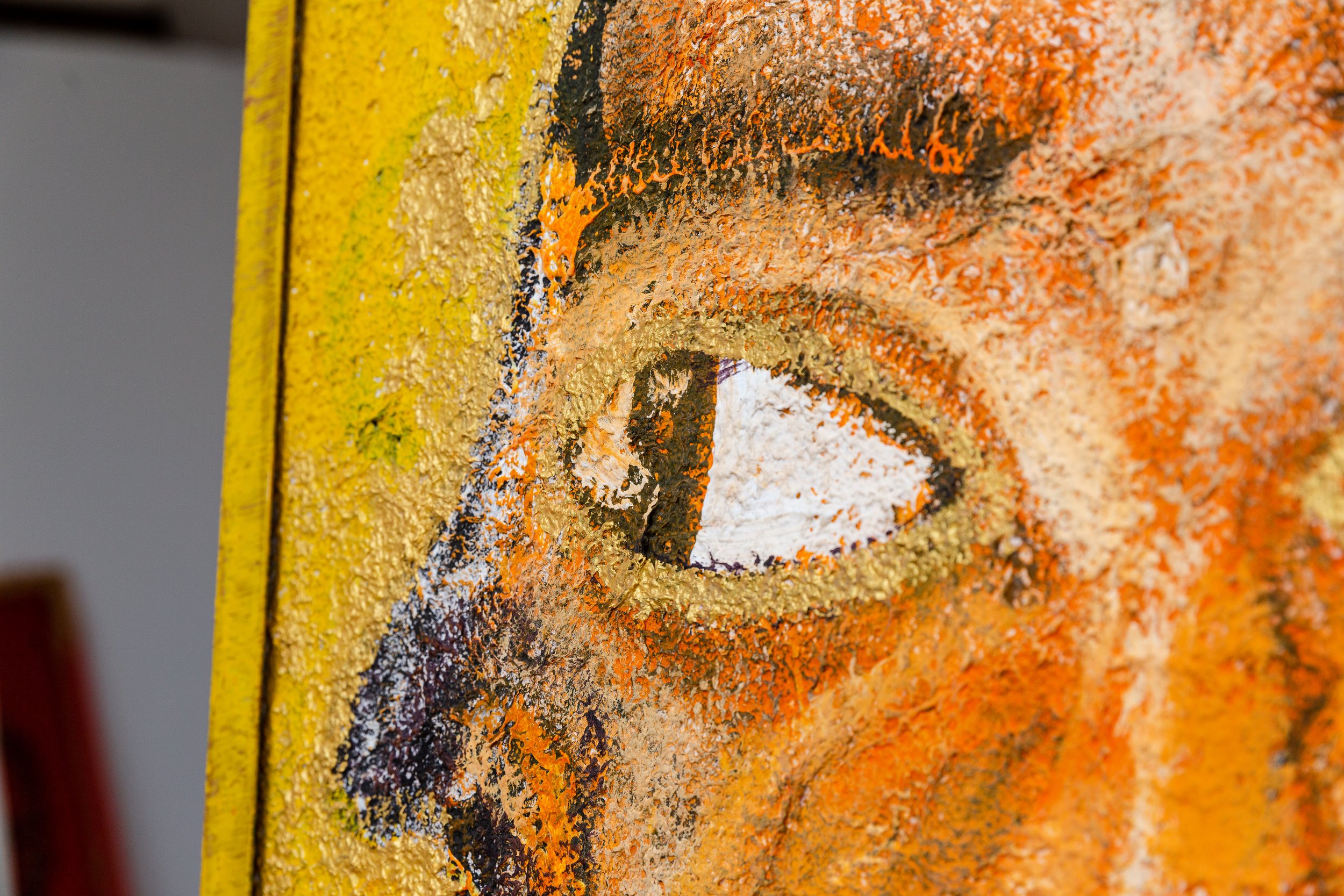
May 19 - July 30, 2022
El Hadji Sy
Now / Naaw
Now / Naaw
A prominent figure of West Africa during the independence era, El Hadji Sy (born in 1954 in Dakar) is presented in Dakar at Selebe Yoon after years of withdrawal from public appearance in his native home, even though he participated in the most important international artistic events in recent years such as Documenta Kassel (2017) or the Biennal of Sao Paulo (2015). After more than fifty years of career, a witness to a colonised society in-transition, an important voice in the development of a new modernity, the itinerary of El Hadji Sy is transnational, travelling and working across Western or African countries such as South Africa on the brink of apartheid. Yet his artistic life profoundly anchors itself in the city he chose not to ever leave, Dakar. As a painter, a cultural activist and the first black curator to collaborate with a western institution in the 1980s, his social commitment and collective initiatives always aimed at an artistic autonomy. This solo exhibition will gather the artist’s most recent works, site-specific interventions, aerial pieces, as well as archives from the end of the 20th century on the artist and his various collective groups, namely the Laboratoire AGIT’ART, Tenq et Huit Facettes.
The title of the exhibition Now / Naaw plays on the simultaneous Wolof meaning of the word “to fly”. As a painter, his works are made with a variety of materials such as industrial jute sacks originally used to ship rice or sugar, kites, butcher’s paper and recycled paper, mirrors, glass, shells, wood, tar - and all hold a performative function. Mobile like props on a stage, semi-functional, blurring the boundaries between functionality and aesthetics, his works metamorphose into paravents, doors, windows, clothes, furnitures and itinerant structures. His political stand manifests itself with paintings both figurative and abstract that convey a visual musicality whereby the bodies and forms submit themselves to a permanent undulatory rhythm.
From poetic interpretations of political events, renderings of daily scenes, references to Dakar’s urbanism, portraits of political, intellectual, mythological or ordinary figures, his works interweave politico-socio economical comments and critical reflections on cultural and globalized systems of production. In “Now / Naaw”, his new works conceived as assemblages of panels and columns on wheels with a variable compositional scheme transform the exhibition venue into a heterogenous landscape. El Hadji Sy disobeys the “don’t-touch” institutional rule of museums that sanctifies the artwork and imposes a distant and contemplative relationship to the visitor. In his exhibition, the artist-scenographer subverts the space, imposes a choreography to the visitor who must work around, touch, walk through, open or close the piece in order to have access.
Naaw (to fly) symbolizes the action, the freedom and the refusal to let oneself get paralyzed by institutions and societal dogmas: a stand that has always been that of El Hadji Sy. Upon graduating from the school of Beaux-Arts in 1977 in Dakar, he remained defiant towards state cultural policy and the aesthetics principles of the negritude - yet he received the support and admiration of former president Leopold Sedar Senghor with whom he exchanged and confronted with continuously. In the 1970s, he walked, stamped, danced and painted with his feet on the canvas as an act of rupture with the aesthetics of the Beaux-Arts. Outside institutional walls, he worked artistically in social spaces, such as streets, hospitals, and train stations in order to involve a wider public and merge his interests in education, development and art. The double phonetic meaning of Now / Naaw evokes the principle of play and “glissement” (sliding), dear to the artist. The junction of genres, the simultaneity of meanings, or the sliding and drifting of identities (glissement d’identités) are visual strategies that the artist uses to bypass the rigid classifications of the world. In a post-independence era, this multidisciplinary consciousness also aimed at avoiding the essentializing and exoticizing risks of a so-called « africanity ».
Between political mobilization and disengagement from public life, community-oriented work and solitude, provocative acts and reclusiveness, El Hadji Sy’s work and figure are plural and crucial to the cultural history of Senegal in the 20th century. After several decades of work, one commitment remains: poeticize and subvert the world with aesthetic reinventions.
-Jennifer Houdrouge
Text copyright: Selebe Yoon
Artist Bio
As a multidisciplinary artist, cultural activist, curator and art historian, El Hadji Sy (born in Dakar, 1954) is one of the pioneering artists of Senegal in the post-independence period and is one of the founders of Africa’s most important artist collective founded in 1974 - Le Laboratoire Agit’Art.
As a cultural activist, El Hadji Sy has always been involved in the development of art and culture of his country through collective initiatives. In 1977, he founded the first Village des Arts in a former military camp based in Dakar city center. Forced to close down, he then took over a Chinese camp and transformed it in artist studios - the current “Village des Arts”. Throughout these years, he organized international workshops with the project space and artist group “Tenq” as well as “Huit Facettes” - a collective taking part in rural areas whose work was presented at Documenta 11 in 2002. In 1984, he was invited to build a collection of contemporary art from Senegal for the Weltkulturen Museum - an ethnographic museum in Frankfurt - and published on this occasion the first anthology of the arts of Senegal, prefaced by Léopold Sédar Senghor in 1989. This research - published one year ahead of “Les Magiciens de la Terre” at the Pompidou Center in Paris (1989) - contextualised contemporary art from Senegal and revealed a non-western modernity. In 1995, he was invited by Clémentine Délisse to co-curate the exhibition “Seven Stories about Modern Art in Africa” at the Whitechapel Gallery during Africa95 festival. Internationally, his work has been exhibited in numerous institutions such as the Museum of Fine Arts, Boston (1980); Linda Goodman Gallery, Johannesburg, (1995); Documenta 14, Kassel (2017); U-jazdowski Castle Center for Contemporary Art, Warsaw (2016); the National Gallery, Prague (2016); the Sao Paulo Biennal (2015); Blum & Poe Gallery, Los Angeles (2020); Kunstverein, Hamburg (2021), amongst others. The artist received a major retrospective Painting, Performance, Politics curated by the artist together with Clémentine Deliss, Yvette Mutumba and Philippe Pirotte at the Weltkulturen Museum in 2015 for which objects from the museum’s ethnographic collection, selected by the artists, were placed in dialogue with his work. In Dakar, he is one of the only senegalese artists to exhibit at the Musée Dynamique in 1966, following Pablo Picasso (1972) and Pierre Soulages (1974). El Hadji Sy worked with numerous curators namely Clementine Deliss, Hans-Ulrich Obrist, Alison Gingerich, and Peter Pakesch. His work is held in a number of important collection - Weltkulturen Museum (Allemagne), la Fondation Blachère (France), David Bowie (USA), Bassam Chaitou (Sénégal), Kehinde Wiley (USA/Sénégal), Jean Loup Pivin (France). Despite having travelled and exhibited internationally, El Hadji Sy has always been working and living in Dakar, Senegal.
